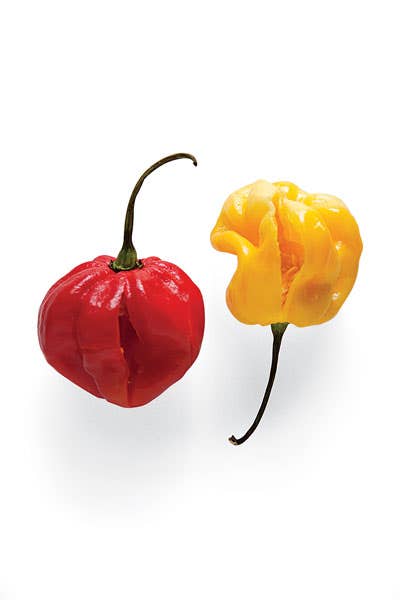
Taming the Heat in Chiles
Since fresh Indian naga jolokia chiles are nearly impossible to find in the U.S., we decided when making Suketa Mehta's vegetarian chili (see Vegetarian Chili) to substitute habaneros. We understood that our biggest challenge would be to tame the chile (pictured, below), the world's third hottest, so that it would shine in the dish without wreaking digestive havoc. We knew that much of the habanero's capsaicin (the chemical responsible for spiciness) resides in the interior tissue that holds the seeds, so we first tried seeding the pepper before chopping it. But the heat released from the cut membranes still yielded a chili far too hot to enjoy. Then, we tried stewing the habaneros whole, which gave us a dish that lacked the requisite kick. Finally, donning rubber gloves and using a paring knife, we simply slit the chiles before cooking them, making a lengthwise incision from the shoulder of each pepper's stem to the tip. This technique coaxed out just enough of both the habanero's floral sweetness and its trademark burn, giving us a chili that we all agreed was just right.
Keep Reading
Continue to Next Story










